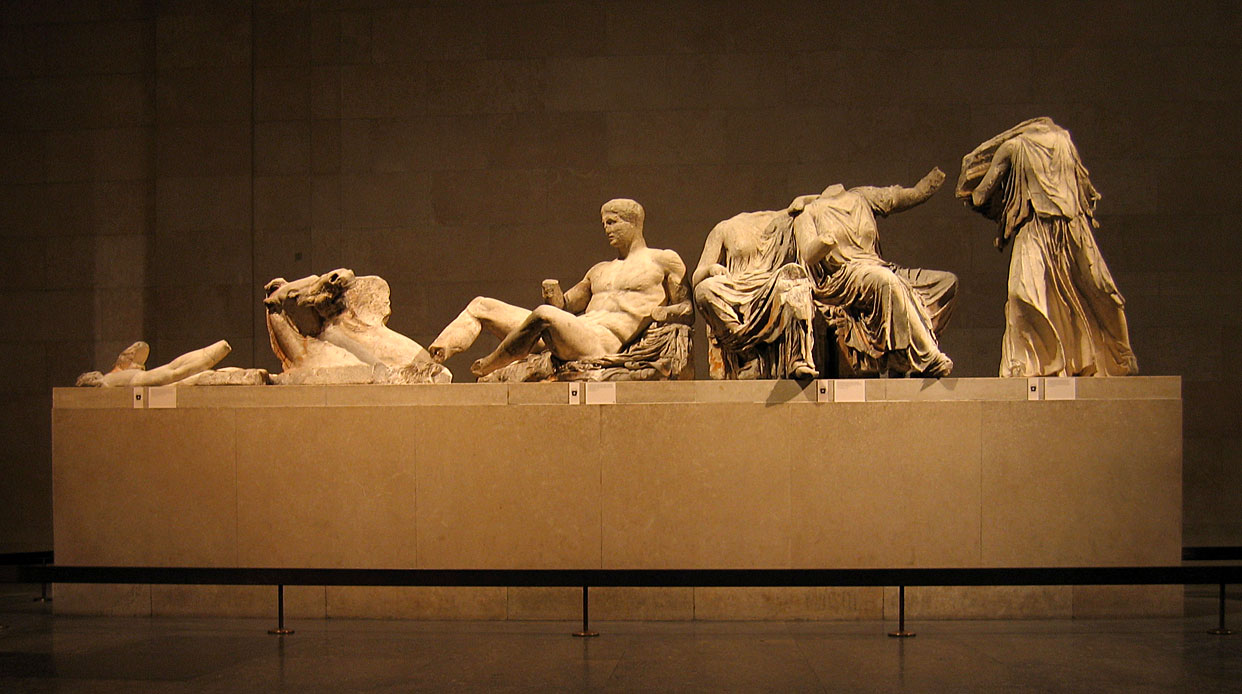I wrote the following post for a class that I am currently teaching, “The History of Ancient Greece.” It isn’t often that archaeologists see the norms of our field so blatantly disregarded. Let’s hope that cooler heads prevail.

(Some of the Elgin or Parthenon Marbles, currently housed in the British Museum in London. These came from the pediment of the Parthenon in Athens. Photo courtesy of Wikimedia Commons.)
Many of you may be familiar with the argument between Greece and Britain over the return of the Elgin marbles — sculptures created in Greece in the 5th century BCE that were exported from the Ottoman empire. Today, works of art and outstanding human achievement are protected around the world by UNESCO. This UN body also strives to protect items of cultural heritage in conflict zones. The need to do so arose during the Second World War when the German government looted and destroyed works of art and cultural heritage from countries that they occupied. After the war, the UN helped enact the 1954 Hague Convention for the Protection of Cultural Property in the Event of Armed Conflict (the full text of the convention is available here). The convention made it a war crime to target items of cultural significance for theft or destruction during armed conflict.
The United States, having created the Monuments Men unit to protect cultural heritage during the war, were early supporters and signatories of the convention. The convention was enacted into US Federal law, making it a crime in the United States to target cultural heritage during periods of armed conflict (even if those actions occurred overseas). This week, President Trump announced that he would target cultural monuments in Iran if the Iranian government sought revenge against the US for the killing of Qassim Suleimani. Thankfully, he later walked this statement back, and, of course, the US has not yet actually targeted any cultural sites in Iran.
Nonetheless, this incident provoked outrage and shock in many communities, including in the military and among historians and archaeologists. The Society of American Archaeology, the Archaeological Institute of America, the American Schools of Oriental Research, and many other professional organizations dedicated to the study, presentation, and preservation of the past issued strong and swift condemnations of the proposed course of action. (You can read some of their statements here and here.)
This matters in our class because in studying ancient Greece we will, of necessity, also learn about their greatest enemy, the Persian empire (a matter that we already began to address in class on Monday when we read “The Persians” by Aeschylus). The capital of the Persian empire, Persepolis, lies in what is today south-west Iran.

(View of the staircase into the Apadana, receiving room of the Achaemenid Persia kings. Photo courtesy of Wikimedia Commons.)
Persepolis is a UNESCO World Heritage Site — that is, internationally recognized for its enduring importance as a site of human endeavor and achievement. One wonders if it was on Mr Trump’s list of 52 sites of cultural importance that he had selected as targets in the event of Iranian retaliation.
In the aftermath, I am left with many questions. If I were in the military and the Commander in Chief ordered me to bomb Persepolis, how would I resolve the conflict between the direct order and my knowledge that the action constituted a war crime? Military personnel are, of course, trained in the laws of war, but the impulse to obey the chain of command is strong. Such an order would put US military personnel in a very difficult position. Let us hope that they are never forced to make this decision.